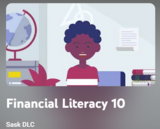
These videos were created by Sask DLC to align with the SK Financial Literacy 10 curriculum and learning outcomes.
- Subject:
- Business
- Financial Literacy
- Material Type:
- Activity/Lab
- Author:
- Sask DLC
- Date Added:
- 09/04/2024

These videos were created by Sask DLC to align with the SK Financial Literacy 10 curriculum and learning outcomes.

Financial Literacy course configuration by module.

"There are 44 modules worth of activities and resources on this page! 31 modules with the secondary icon are designed for high school instruction in the Saskatchewan Financial Literacy 20/30 curriculum.
Although some of the content of the 13 other modules are designed for middle years instruction, they are easily adaptable to secondary learners. Teachers, consult your school division to see if the 13 modules have been taught at the middle years level to avoid repetition.
Simply click on a theme, select a module for instruction, pick an appropriate suggested activity from the Teacher’s Guide, and download the necessary resources to help students meet the module’s outcome."

Explore options for funding post-secondary education and training.
Teacher Guide included.
5-7 hours

This resource contains: Financial Literacy Resource Guides for teachers, projects, classroom resources, PowerPoint lessons, Excel and Google Sheets, Games on topics including: Savers Beware, Business Cycle, Understanding Payroll Deductions, Life Planning, Financial Planning, Interest and Credit Cards, and TFSAs

This resource contains: Financial Literacy Resource Guides for teachers, projects, classroom resources, PowerPoint lessons, Excel and Google Sheets, Games
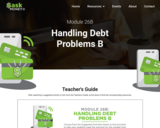
Examine the processes of and alternatives to personal bankruptcy in Saskatchewan.
Teacher Guide included.
3-5 hours

MyMoneyCoach: This website presents excellent information for students to learn about various types of debt:
- Student Loan Budgeting and Money Management - Practical Tips for Post-Secondary Students: Money Management Strategies -- * Develop a workable budget that also gives you a little money for fun… yes, fun! * If you are using student loans or have enough money saved to get you through, set it all aside in a separate savings account.
- Tips for Paying Off Credit Card Debt: Here are some practical ways you can quickly tackle your credit card debt and take your first real steps toward getting out of debt: * Put your credit cards away until you have completely paid off the outstanding balances.
- Create a Budget to Get Out of Bad Debt - Shed Your Debt Weight: Did you make any resolutions this year? Many people plan to shed the extra pounds that are dragging them down – but does that include weight from your bad debt? It’s amazing how heavy a maxed out credit card can feel!
- How to Get Out of Debt and Keep it that Way: Debt solutions and strategies to get out of debt can vary for everyone, however, the sooner someone is able to deal with their debt, the more options they generally have available to them.

This resource consists of various Inflation Resources- lessons, graphics, presentations, assignments and quiz questions for teachers to use with Module 33: Macroeconomics within the Financial Literacy courses
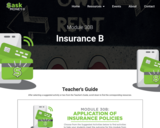
Examine the processes for purchasing insurance policies and for filing insurance claims.
Teacher Guide included.
2-3 hours
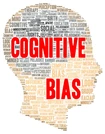
The objective of this activity is for students to become familiar with common cognitive biases they may experience while making financial decisions. Students race to match definitions and examples of how biases show up in a personal finance context to the corresponding biases.
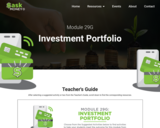
Construct an investment portfolio that includes short-, medium- and long- term investment goals.
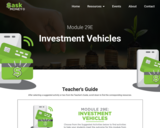
Compare various investment vehicles.
Teacher Guide included.
2-4 hours

"Personal Finance program teaches students in grades 9-12 personal money management skills including the key elements of personal finance such as spending wisely, budgeting, saving, investing and using credit."You can contact your local Junior Achievement (JA) to offer this course or you can enrol as a teacher and have your students complete it under your direction. This can also be accessed by a student or parent as well (with a free account).

Gamified tax literacy courses are now freely available for Canadian students and teachers on the ChatterHigh platform. Demystify taxes and boost confidence in youth so they can do taxes on their own with these 7 gamified online courses by the Canadian Revenue Agency. Course titles include: Starting to Work, Preparing to Do Your Taxes, Completing a Basic Tax Return, After Sending the CRA Your Tax Return and Purpose of Taxes. Students will earn a certificate of achievement for completing the Completing a Basic Tax Return course. By seeing examples of tax slips and tax returns, as well as walking through the steps of completing a basic tax return, students will tain the tools they need to confidently do their taxes on their own.

This presentation helps to teach Module 33: Macro-Economics: Investigate the role and responsibilities of the Bank of Canada in regulating interest rates in Canada, research and assess the impact of each stage of the economic life cycle on Saskatchewan and Canadian markets and examine the relationship between economic factors such as interest rates and economic conditions (e.g., recession, depression and bull market) and investment relative to a country’s economic growth.
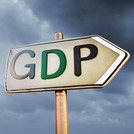
In this lesson you will learn about how the larger macroeconomic situation impacts every Canadian (market growth/decline, inflation, and domestic and global economic conditions (war, unemployment, labor, international trade). This lesson will explore questions such as: What are key indicators (types of markets, unemployment, inflation, and Gross Domestic Product (GDP)) identifying to a country’s economic performance and how do these affect financial decisions?

In this lesson students will learn about how inflation impacts every Canadian, as it is part of every purchase we require to live: housing, food, clothing, entertainment and more. The calculation of the Consumer Price Index (CPI) is demonstrated through the basket of goods that make up the CPI figures. Knowing about inflation and the impact on financial decisions is very important for students to learn to “stay ahead”; meaning money earned/income needs to equal or be greater than money spent/ expenses, or they will “fall behind” financially. The lesson ends with a demonstration of a single good, calculating the “Big Mac Inflation” and comparing this to all other goods.
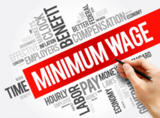
In this lesson, you will learn about how larger economic situations impact every Canadian, specifically around employment and jobs. Financial literacy is very interconnected to career planning, education planning, family planning and mental wellness. The impact of these 5 items is circular and unemployment is a very important topic in this whole circle. If someone is unemployed, the economic and financial impact can be devasting (look at what happened when millions lost their jobs during 2020 Covid-19 crisi!)
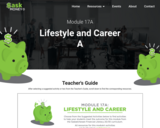
Explore career options to support one's desired lifestyle goals.
Teacher Guide included.
2-3 hours